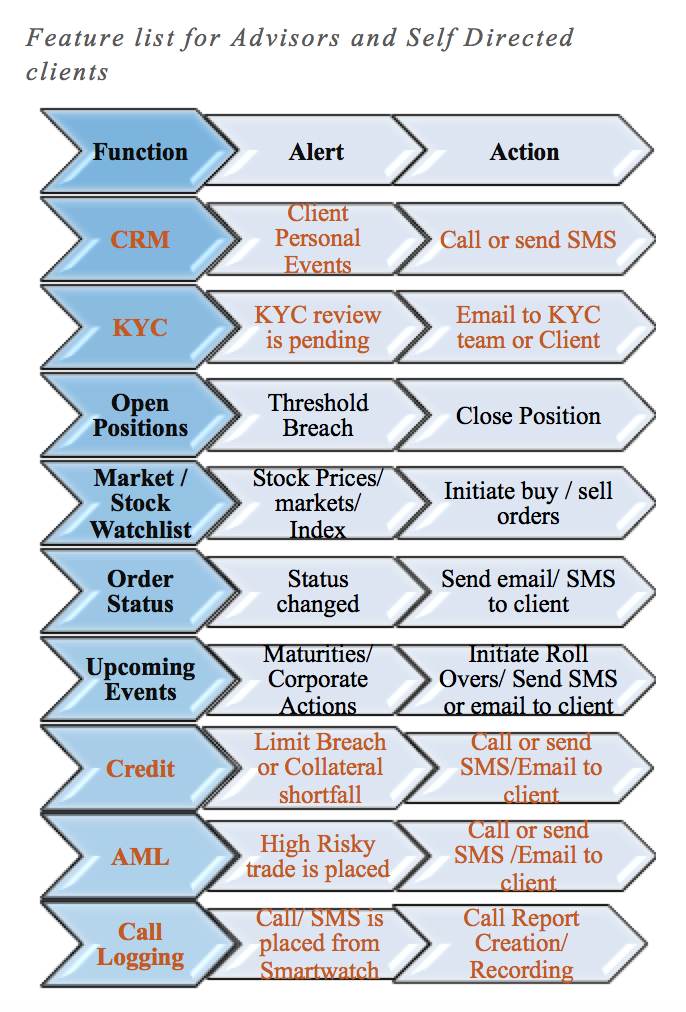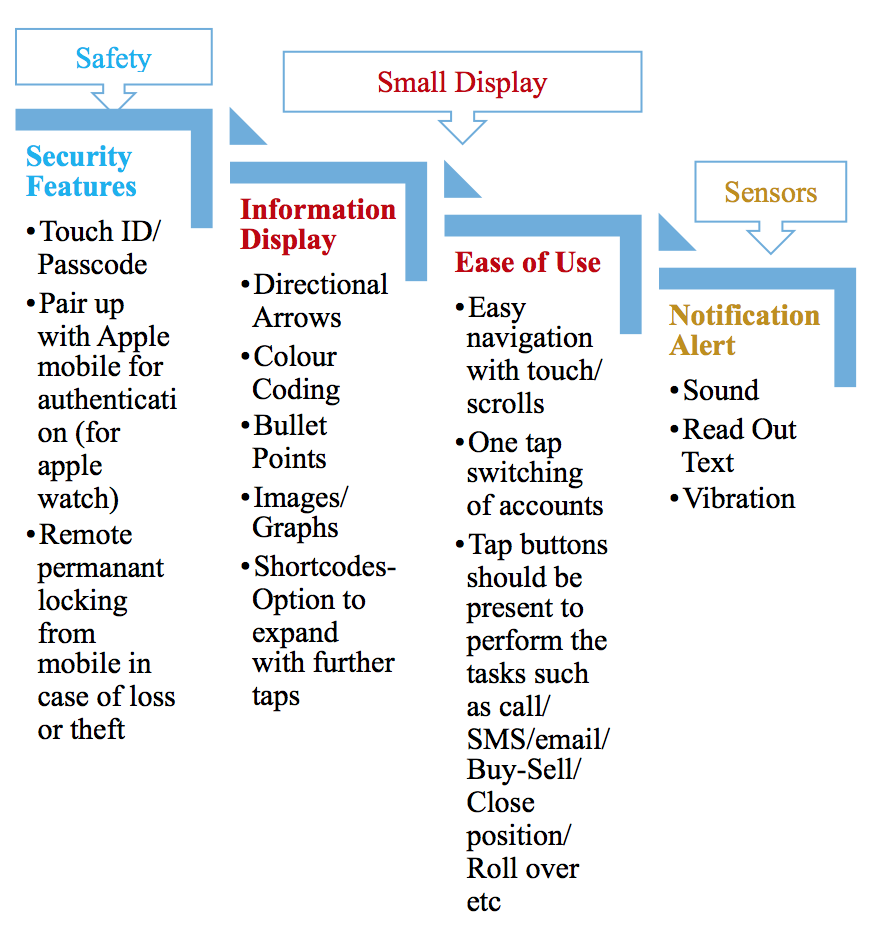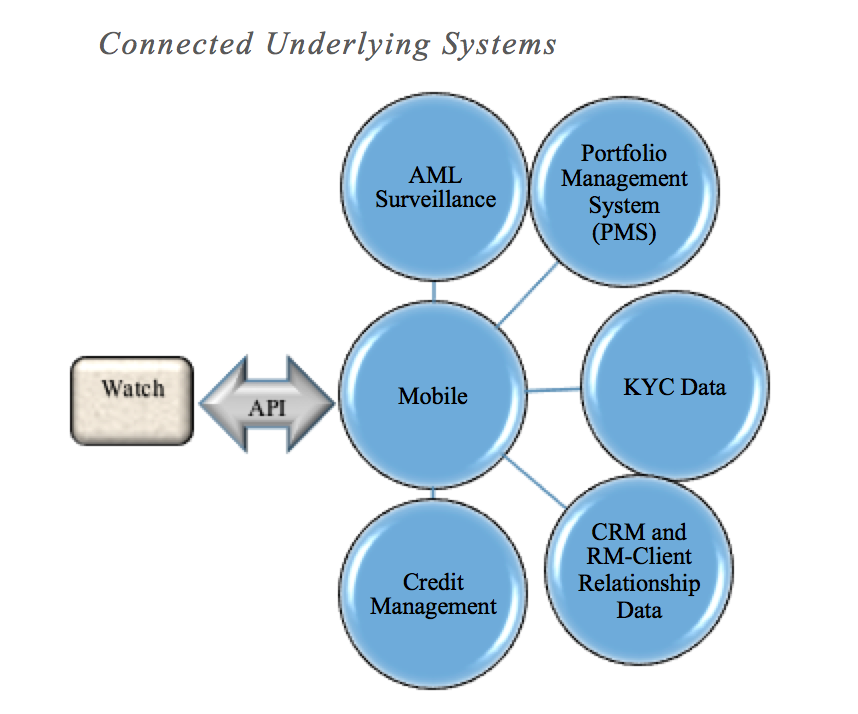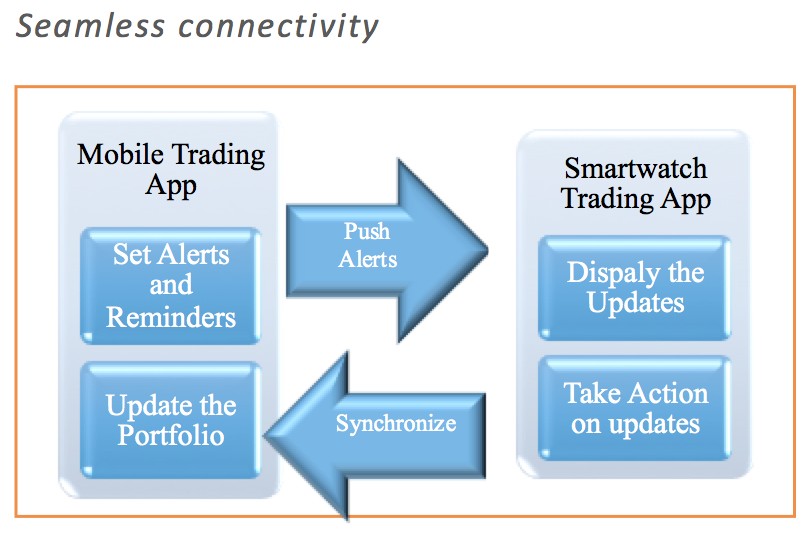Wearable technology in investment banking: watch your money on your watch
How can wearable technology be made popular in investment/wealth management services? Kashmira Ajgaonkar, senior consultant at Capco Technologies, and Sunil Devidharan, principal consultant at Infosys, are suggesting a number of features that can create value and relevance to individual traders and wealth managers, if made available on smartwatch trading apps.
Wearable technology is use of any device, which can be worn on body, to send and receive information over internet. Wearables such as clothes, watch, mobile, jewellery and glasses are used for collecting and displaying data or performing functions which have been so far done by computers.
Internet of things (IoT) is expanding its scope and relevance rapidly from switching on lights and heater in your house or tracking your vitals on fitbit to managing your portfolio through mobile phone. The application of this technology in financial services includes mobile banking/mobile trading, iPad-based advisory services, use of bracelets/jackets in retail payments and something more compact – like a watch – which can be used to track markets or close open positions. But in trading space, use of such a technology is limited to receiving alerts/notifications and hence is not much popular among the trading community yet.
How it works
The diagram below displays how a smartphone is synched with mobile to perform the trading functions. Same architecture could be evolved further to extend the features which can offer easy and convenient way of performing action based urgent tasks.
Future roadmap
As of now, a trading watch-based app is working as an extension of mobile app and to take any further action a trader is required to use their mobile or iPad. In future, wearable devices should allow traders or advisors to take action based on the notification received and initiate next steps using call, SMS, email and other features designed for trading (such as buy/sell touch buttons). Key focus should not be on offering everything on a watch but instead a set of limited action-based features that are simple and urgent.
Two versions of a smartwatch trading app can be created: one for advisors to manage client accounts, and the other for individual traders and investors who manage their own accounts.
Advisors
Client name, account name and portfolio ID should be displayed on the watch along with the information/alert displayed. If any action is initiated from a smartwatch, it should get recorded specifically for that client and his/her portfolio. A smartwatch should have basic capabilities such as calling and sending emails, SMS etc. Standard email and SMS templates for each of the category of action should be built into the application.
Self-directed clients
For self-directed clients, a stripped down version of advisory app should be made available by disabling the features which are required only by advisors. Displaying account name (in case of client holding multiple accounts) and portfolio ID is critical. Alert and action should be specifically for that account and portfolio.
 NB: The features listed above in orange are required only for advisors. The rest should be available for both self-directed client and advisors.
NB: The features listed above in orange are required only for advisors. The rest should be available for both self-directed client and advisors.
User experience
Security concerns and smaller display are major impediments limiting the use of wearables in trading space. Clarity and completeness in displayed information along with easy-to-use functions for taking further actions will drive customers to smartwatch-based trading. The way notifications are sensed by users can be innovative. Offering nice-to-have features such as vibration and/or text reading can become added advantage.

Integration points
For enabling the above features, a smartwatch is required to be integrated with a mobile app, which is in turn connected with multiple underlying systems and databases.













































